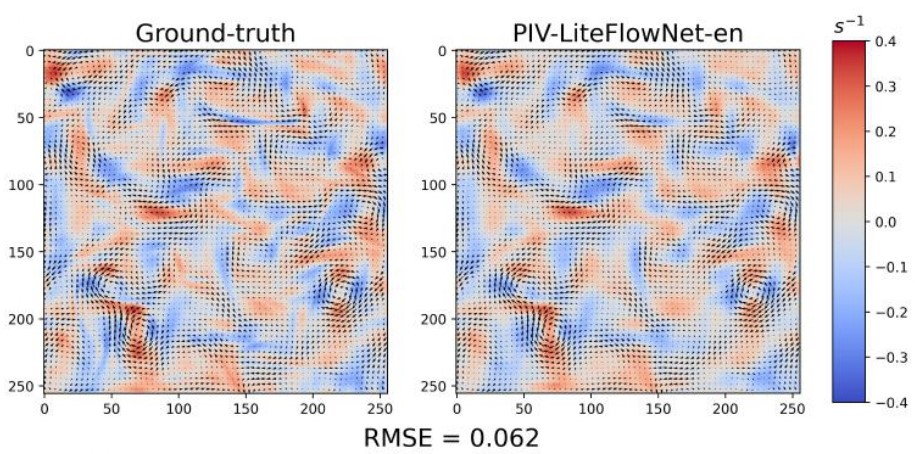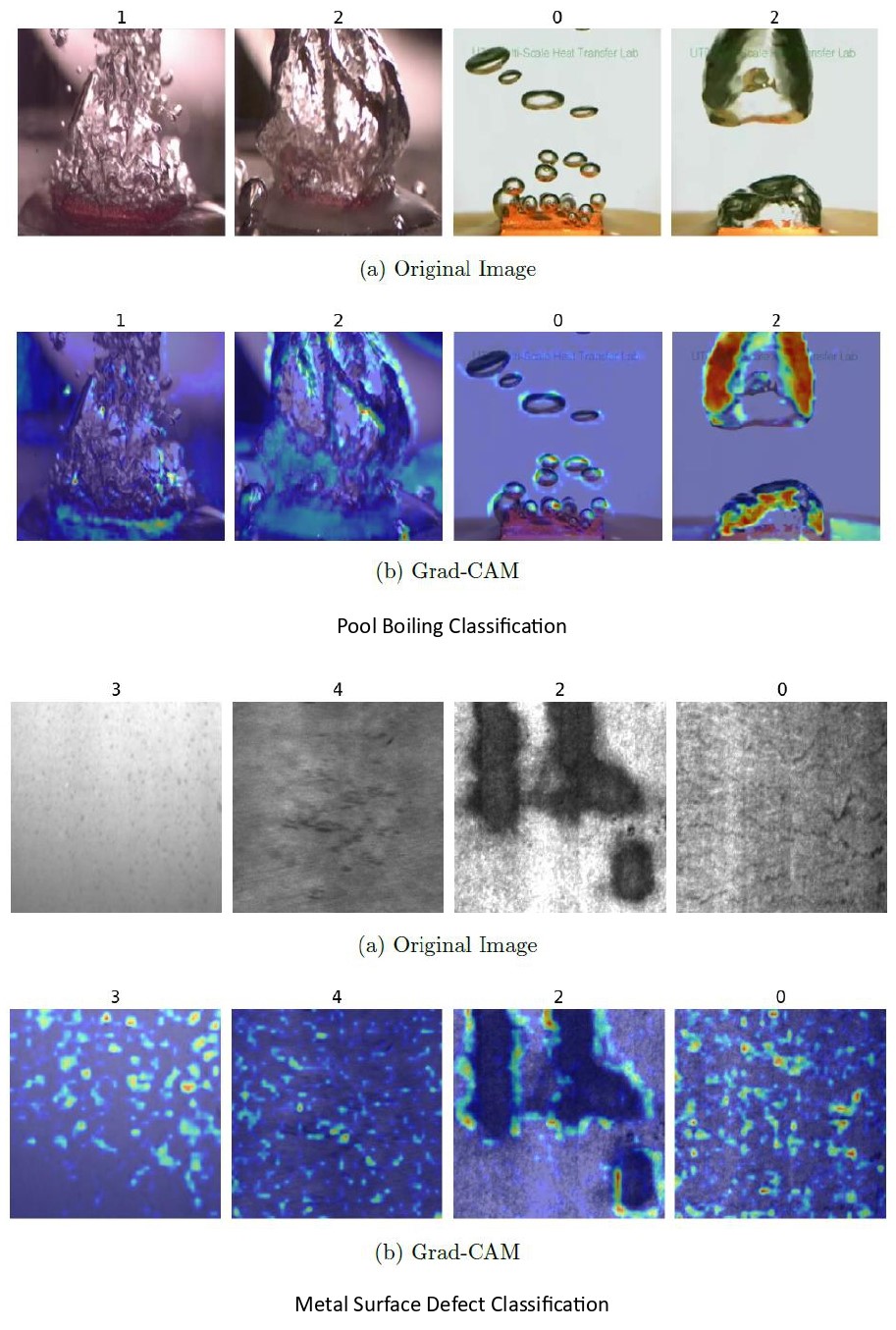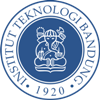
Deep Learning-based motion estimator applied to PIV images.
Deep Learning-based Flow Motion Estimator
The flow science and engineering of Institut Teknologi Bandung has delved
into the topic of computer vision for research for several years. The application of computer vision for aerospace engineering application has been the top interest in this laboratory, specifically concerning flow. A deep learning-based flow motion estimator was developed for Particle Image Velocimetry (PIV). The developed deep learning approach has been shown to produce promising results with higher accuracy and better computational performance than the conventional PIV processing methodology. Our flow estimator utilizes Computational Neural Network (CNN) with LiteFlowNet architecture, which is trained using high resolution experimental and DNS data sets. Figure above shows the comparison between the ground truth from DNS data and LiteFlowNet-PIV result.

Deep Learning-based motion estimator applied to regular images.
To show the robustness of the developed motion estimation program with LiteFlowNet as the backbone, another test case is presented. In this case, the program is used to estimate the flow fields inside a model root canal, generated by Eddy-tip cleaning activation. The images are actually regular images, instead of specially prepared particle images.
Deep Learning for Image Classification

Deep Learning-based classification of Pool Boiling and Metal Surface Defects.
Another active works in the field of computer vision is the development of advanced explainable deep learning models for image classification. The works in our lab not only focus on the performance of the machine learning modeling in multi-class classification problems, which has a black-box nature. We concentrate on the development of explainable machine learning so that it can be used as a tools for researchers in identifying important features from the images. Current work asses the explainability of deep learning classifier, such as Principle Component Analysis (PCA), Convolutional Neural Network (CNN), and Capsule Network (CapsNet), using interpretability methods like SmoothGrad and Grad-CAM. Figures above are examples of implementation of the methodology in engineering cases: Pool Boiling and Metal Surface Defects classifications.

Deep Learning-based Classifications of Ulcerative Colitis from Gastrointestinal Endoscopy.
Collaborating with the Faculty of Medicine Universitas Indonesia, we developed a deep learning model to enhance the medical workforce’s ability to diagnose ulcerative colitis based on severity. Ulcerative colitis is a chronic, inflammatory bowel disease (IBD) that causes inflammation and ulcers (sores) in the digestive tract. The determination of ulcerative colitis always requires laboratory endoscopy imaging, and the evaluation of endoscopic results is very dependent on the observer’s capability. On average, Ulcerative Colitis (UC) experts can only correctly diagnose UC 73.5% through full colonoscopy series. Our deep learning model successfully achieved a 0.9156 F1 score in classifying mild and severe ulcerative colitis. The explainability models are able to locate the blood, lump, or white lesions, which helps medical workforce in identifying ulcerative colitis in the intestines.

Deep Learning-based Classifications of Palm Oil Fruit Ripeness.
Recently, we have implemented our computer vision methodology for non engineering cases. In agriculture application, harvesting the oil palm manually presents challenges due to its towering height and the presence of thorns on its trunk. The productivity of fruit bunch harvesting can be increased by automatic grading of fruits based on ripeness, using computer vision. The implementation of our model successfully performs the automatic classification with 99% accuracy.
